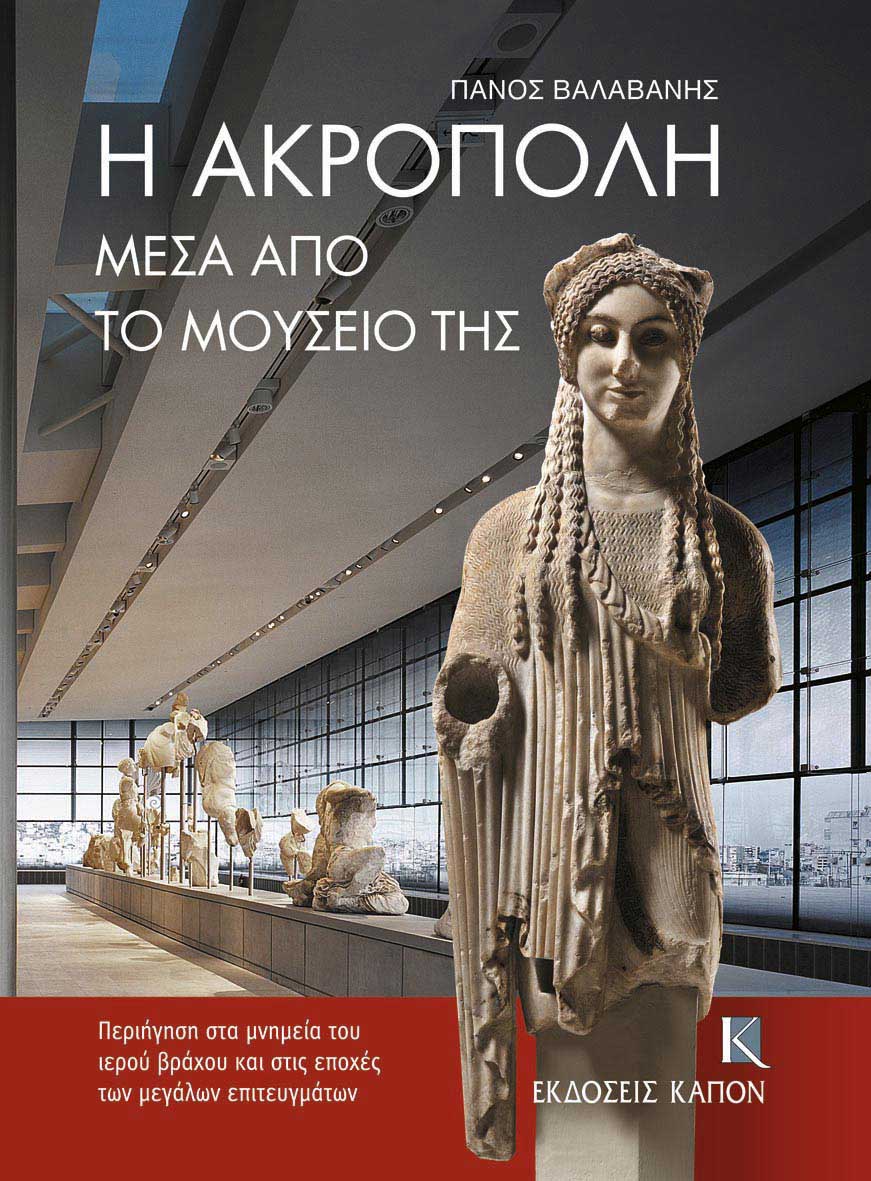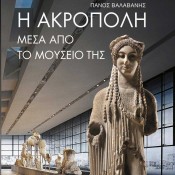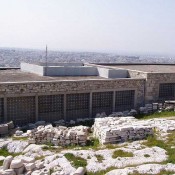A book-guide for the Acropolis Museum? Not really. Panos Valavanis, Professor of Archaeology and author of the book “The Acropolis through its Museum” describes in his own unique way, the thought behind the writing…
“This book attends to see the Acropolis monuments through a scientific approach. It answers “why”. “Why the monuments were made then and not in another period? Why they were made as such and not in another way? What led the people making these artistic or political choices?”, he explained his audience during the presentation of the book, published by Kapon Publishers.
Through the pages, the reader recognises not only the pieces of art exhibited at the Acropolis Museum but also the attempt to reconstruct the history of the Acropolis itself. “It is something beyond a museum guide” says Prof. Valavanis, as, despite the text follows the way of a visitor inside the museum, it is written in such a way that it is can be read independently. The books’ illustration is very helpful on this, as sketches and photos enable us to understand fragmentary works of art, each one in its framework.
“The monuments have to be faced as present. For example, a significant politician, such as Pericles, or a state, such as the Athenian one, decides to invest huge amounts of its state funds in order to make, in a certain way and plan, temples such as the Parthenon. This is done in ordrr to achieve certain aims. To get back, not money, but non-material capital, to gain prestige, fame and power, so that it can claim the Panhellenic hegemony”, states Prof. Valavanis describing the historical framework behind the monuments when, after the Persian Wars, the geopolitical state in Greece changes and a powerful Athens is trying to claim the lead off Sparta.
“Today, every system of authority uses the Mass Media as its means to communicate its message and to form what we call “national conciousness” . During the antiquity, the only way this could happen was through images in friezes, pediments and metopes (panels) of the state buildings, greater sanctuaries and city agoras, the areas where the “national identity” of each state was promoted”.
Were there lions in Attica in the 6th century BC? Prof. Valavanis says “yes”, although the renowned representations on the Archaic Parthenon(fragments are on display at the Acropolis Museum) where lions eat bulls are not derive from actual prototypes. “They are copies of Oriental prototypes”he says, explaining that “Lions and beasts in general symbolize power. They are made during the Aristocratic period, when powerful social classes in Athens are fighting each other or trying to control the rest. I believe that this image of the powerful beating somebody less powerful or weak reflects these political and social clashes happening in Athens during the first half of the 6th century BC”.
Slowly, Greek art is getting a human face. The beasts are getting less and less, the animals and plants are getting a decorative character and people are the dominant element. “It is not strange that we proceed towards more democratic forms of social organization”, he states.
Along came Pheidias, the great pioneering artist. “The choice to make the Parthenon so broad and big is a great innovation we owe to Pheidias. He wanted to put the large gold-ivory statue of Athena Parthenos there. So, he persuaded Iktinos to make the Parthenon with an 8-column narrow side, not a 6-column one as it was normally happening. Such explanations are given throughout the book in order to demonstrate how such artistic forms came up”, says the Professor who studies and teaches about the Acropolis for more then 30 years.





